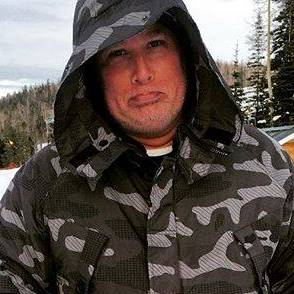Suits vs. Skins
Do San Onofre nudists stand a stitch of a chance against the mighty state?
Ruth Coleman and Allen Baylis agree that nude sunbathing along the southernmost stretch of San Onofre State Beach has attracted people who boink in public. They agree that Trail 6, the path that leads from the parking lot to the nude beach, gets frequent mentions in swingers' magazines and on gay-cruising websites as a place to go for anonymous sex. They agree lewd-behavior calls overwhelm park rangers patrolling the beach a few miles south of San Clemente, on the San Diego County side of the Orange County line.
Coleman is the California Parks Department director who on May 19 issued a nude-sunbathing ban on the secluded, 1,000-square-foot beach that has been frequented by nudists since Harry Truman was president. Baylis—an attorney, just-announced Huntington Beach City Council candidate and “naturist”—is a petitioner in a lawsuit filed earlier this month to prevent the state from killing in-the-buff beachgoing at San Onofre.
Coleman's “Trail 6 Nudity Law Enforcement” order directed rangers to begin, on June 1, “educating” beachgoers about keeping their trunks and bikinis on and to start issuing citations for nudity after Labor Day. San Onofre, the only area in the state where such a ban has been issued, has become a “sexually charged atmosphere” that leaves rangers uncomfortable and the Parks Department vulnerable to employee sexual-harassment claims, Coleman wrote in her order.
Baylis, president of the naturists group Friends of San Onofre, swears the nudists are not the folks getting it on, that law-breakers do their illicit business at the south end of the Trail 6 parking lot, away from sunbathers.
“They claim there are X number of citations for lewd conduct, but they don't say where they were given—on the beach, or in the parking lot. It makes a difference,” Baylis says.
The Naturist Action Committee (NAC) lawsuit that he has joined claims the nudity ban violates the Park Department's own 29-year-old policy. A May 31, 1979, memorandum by then-Parks Director Russell W. Cahill stated that while the department would not officially designate clothing-optional beaches, nude sunbathing is “a victimless crime, at worst,” and “[t]herefore, it shall be the policy of the department that enforcement of nude-sunbathing regulations within the State Park System shall be made only upon the complaint of a private citizen.”
The so-called Cahill Policy was cited in the 1980s when a court ruled in favor of a skinny dipper in California v. Bost. That prompted then-Deputy Parks Director Jack Harrison to send a letter to the Western Sunbathers Association on June 14, 1988, saying nudity would be legal in “a traditionally recognized area” until a member of the public complained. Nudity would cease the rest of that day but could continue later until another complaint.
Coleman's order says the policy change “stems from the increase in verbal complaints from the public about nudity in general on a public beach and the public not wanting to be exposed to it.”
Paraphrasing Samuel Goldwyn, Baylis says, “Verbal complaints are not worth the paper they are written on.”
The only written complaint from the private citizen the Parks Department has produced is a June 14, 2006, letter from a lady who stumbled onto the nude beach while walking her dog. She wondered why there was no warning sign.
“We've been saying that for years,” Baylis says.
The only employee complaint the Parks Department has come up with is an Oct. 31, 2007, letter from a San Onofre maintenance worker who warned rampant indecent exposure, lewd conduct and obscene rubbish (porn, condoms, sex toys) could create a hostile work environment.
Courts have upheld that nude sunbathing and skinny dipping are not lewd, indecent nor illegal in confined areas. Baylis maintains Cahill, Harrison and California case law legitimize San Onofre as such an area.
Instead of banning nudists, who help shoo away or alert rangers to law breakers, he advised the Parks Department to go after those engaging in the illegal acts that have everyone on edge.
Nudists upset about the ban have complained to the Parks Department also. In response to Marianna Handler's June 6 letter, Acting Superintendent Joseph M. Milligan wrote that the Cahill Policy only applied to remote areas of parks. Because San Onofre gets 2.5 million visitors annually, “it can no longer be considered remote,” Milligan stated.
However, “remote” appears nowhere in Cahill's memo. “Remoteness” is among the criteria listed in a Jan. 31, 1979, Parks Department report judging 11 California beaches for potential clothing-optional designations. That report singled out San Onofre's Trail 6 as the best Southern California beach for such a designation and suggested a “simple sign” be put up to alert visitors.
Roy Stearns, the Parks Department's deputy director of communications, said in a July 10 Orange County Register story that the Cahill Policy could be reversed at any time without public notice or hearings.
That violates the state's Administrative Procedures Act, which mandates public hearings before policies can be changed, the NAC lawsuit claims.
Besides, Baylis says, “That's just bad government. The Parks Department is acting like a typical bully government agency.”
Calls to the department for comment for this story were routed to the California Resources Agency, which supervises state parks. “Unfortunately, we can't talk about this until the litigation plays out,” said agency spokesman Sandy Cooney.
Judge Sheila Fell will try to get to the naked truth at an Aug. 20 Orange County Superior Court hearing. Clothing is mandatory.

OC Weekly Editor-in-Chief Matt Coker has been engaging, enraging and entertaining readers of newspapers, magazines and websites for decades. He spent the first 13 years of his career in journalism at daily newspapers before “graduating” to OC Weekly in 1995 as the alternative newsweekly’s first calendar editor.

